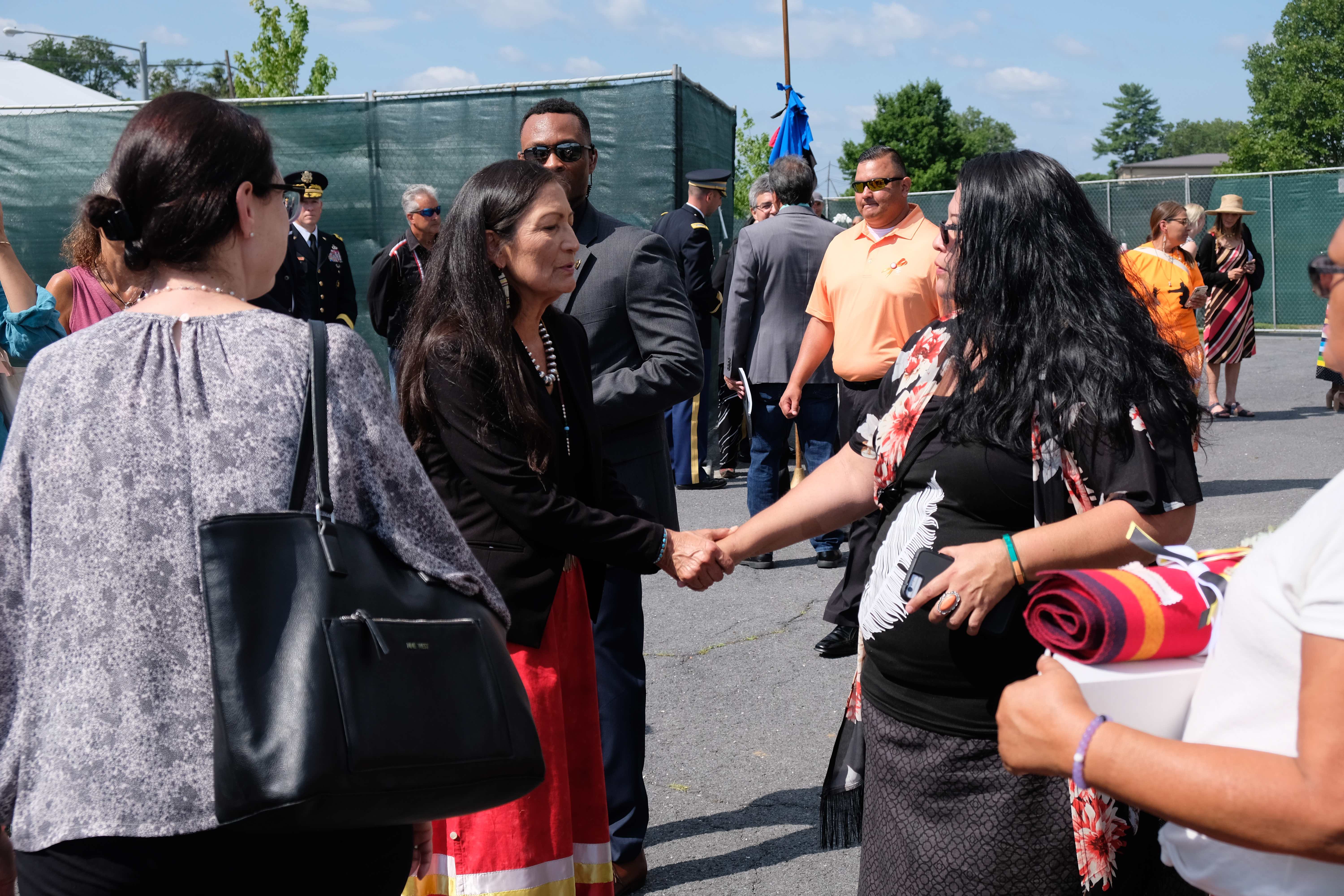
- Details
- By Levi Rickert
In late May, the discovery of the remains of 215 children in a mass grave at the former Kamloops Indian Residential School in British Columbia was disclosed to the world. The disclosure shook the world, shining a spotlight on a dark era of forced assimilation of Indigenous children by the government of Canada and the Catholic Church.
As communities around the world processed the news about Kamloops, many non-Indigenous leaders — including Canadian Prime Minister Justin Trudeau and Pope Francis — expressed their shock. But for most Indigenous people throughout North America, the overriding feeling was sadness and anger, but not shock.
“Absolutely not shock,” one Native source told us. “We’ve known about this.”
Want more Native News? Get the free daily newsletter today.
For more than a century, Native children in Canada and the United States were forcibly removed from their homes and sent to schools run by churches and the federal governments. In Canada, they were called residential schools and in the United States, they were referred to as boarding schools.
Once in the schools, children were stripped of their Indigenous identity and subjected to unchecked instances of sexual and physical abuse, psychological trauma and death. Indian schools were an open secret among Native people, and the cause of generational trauma for many families.
Indigenous people have lived with the history of families wounded from scars left on the generations of Native children taken from their tribal homes and placed in Indian boarding schools in the United States and Indian residential schools in Canada. The intergenerational trauma continues to our youth’s generation today.
The news in Canada prompted the U.S. Department of the Interior to establish a Federal Indian Boarding School Initiative in the United States to begin addressing this country’s own dark history.
Since the May announcement at Kamloops, there have been three additional disclosures of graves at three other Canadian residential schools. To date, the remains of more than 1,400 Indian children have been discovered.
Soon after the first disclosure of 215 graves with the remains of students at the Kamloops Indian Residential School in British Columbia, Native News Online’s editorial staff realized the significance of the larger story of a dark chapter known to Indigenous people, but generally unknown to non-Native people.
Our editorial team decided that truth must be told for healing to take place within our tribal communities.
On Wednesday, senior reporter Jenna Kunze was in Carlisle, Pa. to report on the transfer of remains of nine students who died thousands of miles from their homes on the Pine Ridge and Rosebud Indian Reservations in South Dakota. On hand at Carlisle Wednesday was Interior Secretary Deb Haaland (Laguna Pueblo), the first Native American to hold a presidential cabinet secretarial post, who said Americans are not often taught about the “worst part of our history.”
Yesterday, we published a column by Dr. Suzanne Cross (Saginaw Chippewa Tribe), who has done extensive research on the Indian boarding school era on generational trauma. She writes: "Healing from traumas may occur if one is able to share their experience with someone who believes and supports them without judgement."
While we have been covering Indian boarding schools over the years, Jenna’s reporting marks the first in an ongoing series of in-depth reports Native News Online plans to publish throughout the remainder of 2021 on the boarding school issue.
As the Federal Indian Boarding Schools initiative performs its investigation, Native News Online will report on its progress. Beyond the initiative’s work, we will provide in-depth coverage of stories that deserve to be told about the children in boarding and residential schools. The Interior Department’s initiative to identify past boarding schools and investigate possible burial sites on U.S. soil, then identify those buried and return the remains to their rightful tribes is enormous in scope, but also deeply limited.
There are several questions this project needs to address. One is: “How much did the U.S. government know about what was happening in boarding schools?” Another is: “When did they know it and how did they respond?” And: “What accountability does the church have for its role?”
Native News Online will work vigorously to answer those and other questions in the coming months.
As a Native American publication, Native News Online is dedicated to truth and healing.
More Stories Like This
Superhuman. Should We Be Better Than We Are?Senator Ben Nighthorse Campbell Proved Representation Matters
The Lie We Keep Telling About Wounded Knee
Another Weapon of Mass Destruction
Colorado cannot heal until it confronts Sand Creek honestly
Help us defend tribal sovereignty.
At Native News Online, our mission is rooted in telling the stories that strengthen sovereignty and uplift Indigenous voices — not just at year’s end, but every single day.
Because of your generosity last year, we were able to keep our reporters on the ground in tribal communities, at national gatherings and in the halls of Congress — covering the issues that matter most to Indian Country: sovereignty, culture, education, health and economic opportunity.
That support sustained us through a tough year in 2025. Now, as we look to the year ahead, we need your help right now to ensure warrior journalism remains strong — reporting that defends tribal sovereignty, amplifies Native truth, and holds power accountable.
 The stakes couldn't be higher. Your support keeps Native voices heard, Native stories told and Native sovereignty defended.
The stakes couldn't be higher. Your support keeps Native voices heard, Native stories told and Native sovereignty defended.
Stand with Warrior Journalism today.
Levi Rickert (Potawatomi), Editor & Publisher

